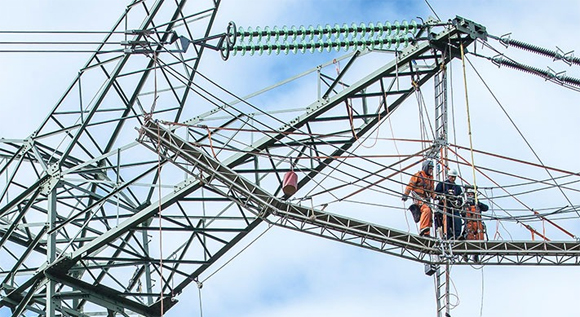Report: electricity supply also secured for the coming years
The report on the security of the electricity supply submitted by the Bundesnetzagentur (Federal Network Agency) at the start of February envisages the security of supply remaining high until 2031. The report refers to the Federal Government’s current plans.
 © iStock.com/kfIGALORE
© iStock.com/kfIGALORE
In the course of the energy transition, in the coming years more and more renewable energy will enter the grid. It is to replace conventional energy sources such as coal and gas, and also make the energy supply secure, affordable and climate neutral in the long run. The energy mix is, however, fundamentally changing the demands placed on electricity grids, power plants, storage facilities and electricity consumers. For example, power plants will only have to produce electricity in the future when there is no sun or wind and the levels of renewable energy being fed into the grid are thus insufficient. Everything is changing, interlinked and interdependent. Will our electricity supply still be ensured under these altered conditions and what is necessary for this to happen?
The report on the security of the electricity supply: detailed grid model of 2,100 combinations of weather and power plant parameters for every single hour
The Bundesnetzagentur addressed these issues in the report on the security of the electricity supply that it submitted to the Federal Government and which was adopted by the Cabinet at the beginning of February. The report examines whether and how a secure supply of electricity can be ensured – given the expansion of renewable energy and the electricity grid planned by law, and assuming that the phase-out of coal is brought forward to 2030.
To this end, for instance, a power plant fleet is appraised for each year considered, and then audited to see whether it can provide a secure supply in different situations. With regard to security of supply in the electricity grid, a detailed grid model is used to analyse whether electricity can also be transported to the consumer in the year under consideration. For every hour in the year (8,760 hours), 350 different power plant failures are estimated and combined with six different meteorological years. This also includes meteorological years with very cold periods and periods of no wind or sunshine. Overall, the study looks at 2,100 combinations of weather and power plant failures for every hour.
Electricity supply remains high until 2031
The Bundesnetzagentur’s report concludes that under the Federal Government’s current plans, the security of the electricity supply will remain high in the period 2025 to 2031. “This will also apply when electricity consumption significantly increases through the use of new consumption appliances, such as electric vehicles and heat pumps, and when the use of coal is phased out by 2030,” said Federal Minister Robert Habeck in a press statement. We now need to act with discipline and determination. “We are driving forward the restructuring of our energy system with continued resolve.”
The Federal Government has submitted joint recommendations for action, which are derived from the findings of the report. Habeck also announced a “power plant strategy”, which is to be presented this year, as a “logical conclusion of the report”. This strategy deals with auction models, i.e. laws and funding principles, for power plants that are not dependent on renewable energy and can also produce electricity when there is not enough wind and solar energy being fed into the grid. It is to be oriented towards climate neutrality and be able to use hydrogen.
Further information
- Press release by the Federal Ministry for Economic Affairs and Climate Action: Secure supply of electricity ensured until the end of the decade. (in German only)
- Report on Security of Electricity Supply (PDF, 5MB). (in German only)
- Explanatory notes – report on monitoring the security of the electricity supply (PDF, 555KB). (in German only)

